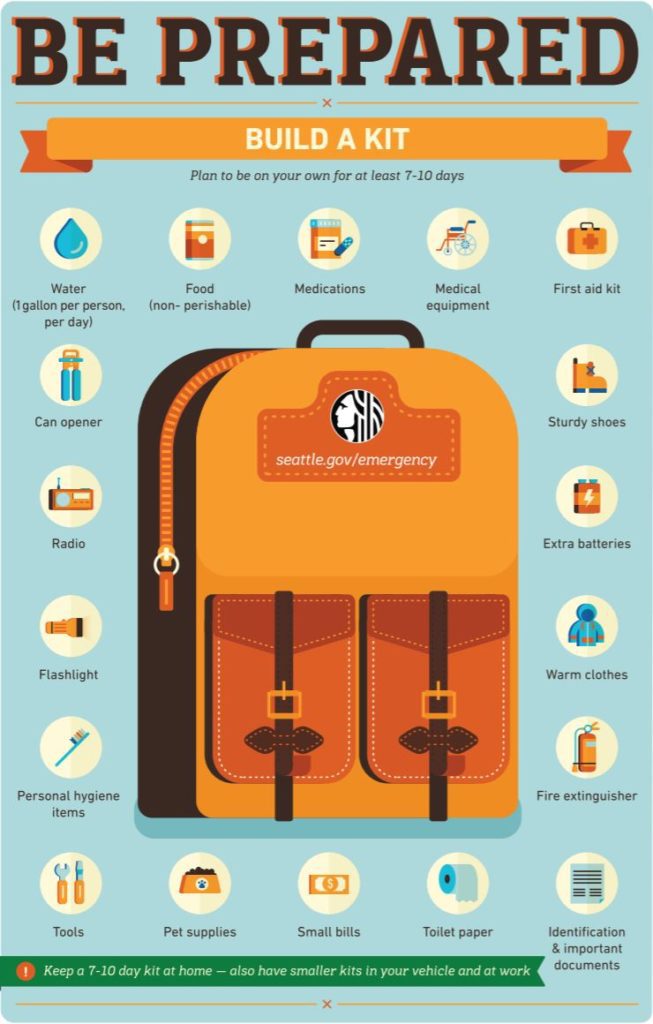
Being prepared for any emergency is as simple as planning ahead and putting together an emergency kit does not have to be difficult or expensive. Seattle’s Office of Emergency Management recommends that your kit has enough supplies to last you seven to 10 days. It’s also good to have a smaller to-go kit in case you need to quickly leave your home. Having kits at work and in your car is also a good idea.
To get you started, here are five things that are absolutely necessary to have in an emergency kit.
Water
- 1 gallon per person per day
- 1/2 for drinking, 1/2 for cooking/sanitation
Food
- Store food that’s high in calories and has a long shelf-life
- Consider meal replacement bars, canned foods and dry food items that don’t need to be cooked to eat
- Make sure to include food you like to eat
Light Source
- Avoid candles to minimize fire risk
- Include safe light options like a battery-powered flashlight with extra batteries or a hand-crank flashlight
- Light sticks are a long-lasting source of light that are inexpensive and fits easily into any size bag
Warm & Dry Clothes
- Include at least one change of clothing
- If you get wet, it’s important that you get dry as soon as possible because moisture pulls heat away from your body (wool or synthetic clothing that wicks moisture away from your body is recommended)
- To stay warm and dry you can also pack extra blankets, a tarp or rain gear
First Aid Kit
- Include items for basic care like adhesive bandages, antiseptic wipes, gauze pads, scissors, tweezers and pain-relief medication
- Make sure to include medications and equipment specific to your needs
After the five basics, what you stock in your kit is up to you. The information below will give you a number of things you can add to your kit and some fun and easy ways to put them together, not only for your home, but your car, workplace and school. The most important thing is to start. Don’t be one of the people who after the disaster says, “I wish I had put a kit together.”
Take These Actions:
- Check out Seattle OEM’s preparedness website to customize supplies to your own family’s needs.
- Download the infographic of essential supplies.
For More:
- Watch FEMA video: Kit contents during COVID19.